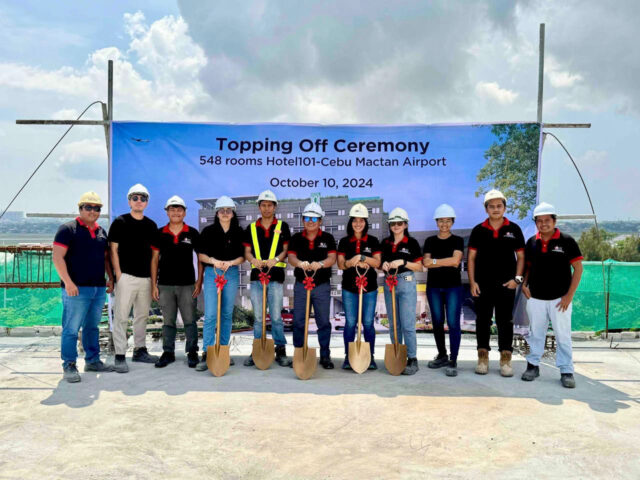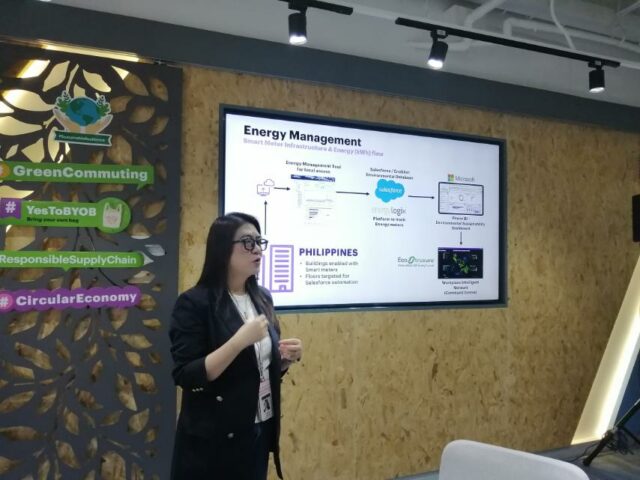The banking industry has been undergoing a significant transformation in recent years. Once perceived as a sector primarily concerned with profit maximization, the banking industry is fast recognizing the importance of climate change, social inequality, and environmental degradation in the way it does business.
Thus, more and more banks are adopting sustainable practices. Evidently, this transformation is driven by a number of factors — from regulatory pressures and customer expectations, to the industry’s recognition and acceptance that sustainability can be and is now a competitive advantage.
As currently practiced abroad and in the Philippines, sustainability initiatives in the banking sector range from environmental stewardship to social responsibility and ethical governance. For example, Philippines banks have now integrated environmental, social, and governance (ESG) factors into business operations, investment decisions, and risk management. By embracing sustainability, banks are embracing their role in societal resilience while also enhancing reputation and financial performance.
Today, one of the most critical focus areas for sustainable banking is climate change. Filipino banks are recognizing that they have a significant role in moving the needle towards a transition to a low-carbon economy by financing “green” projects.
It is not unusual these days to read in the news that some major banks are developing and providing loan packages and investment proposals for renewable energy projects, energy efficiency initiatives, and sustainable transportation. We are also seeing several banks manifesting support for climate adaptation initiatives by financing infrastructure projects that build resilience to climate-related risks.
From the current base of initiatives, another focus of sustainable banking is the industry’s commitment to social responsibility. We see banks contributing to social development by providing financial services to underserved communities, promoting financial inclusion, and supporting initiatives that address poverty, inequality, and unemployment. By investing in human capital and creating shared value, Filipino banks are helping build stronger relationships with their customers and communities.
Indeed, sustainability in the banking sector is essential for several reasons. They are as follows:
• Risk Management: Because banks take into consideration ESG factors, they are now able to better manage risks associated with environmental disasters, social unrest, and governance failures.
• Reputation and Trust-building: Adoption of sustainable practices promote bank’s reputation and help build trust and credibility with customers, investors, and regulators.
• Regulatory Compliance: Increasingly, governments and regulatory bodies are mandating sustainability reporting and practices.
• Market Opportunities: There is growing demand for green finance products and services, providing banks with new business opportunities.
• Long-term Profitability: Sustainable practices can lead to cost savings, improved operational efficiencies, and long-term profitability.
By looking at the current landscape, we can readily see that banks are employing several strategies in promoting sustainability in the financial sector. By incorporating ESG criteria into their lending and investment processes, they ensure that the projects and companies they finance are aligned with sustainable practices. Assessing the environmental impact, social implications, and governance practices of potential borrowers and investees is becoming a regular practice in the banking industry.
Offering green financial products, such as green bonds, sustainability linked loans, and green mortgages, allows banks to support environmentally friendly projects and businesses. These products can help finance renewable energy projects, energy-efficient buildings, and sustainable agriculture.
Banks are also improving their internal operations by adopting energy-efficient technologies, reducing waste, and promoting sustainable practices among employees. These efforts are further complemented by implementing other initiatives such as paperless banking, use of renewable energy sources, and eco-friendly transportation.
Supporting community development and social initiatives is another way banks can contribute to sustainability. This involves funding education programs, healthcare services, affordable housing projects, and other initiatives that improve the well-being of communities. Regularly publishing sustainability reports and setting clear sustainability targets are also common staples. These help banks demonstrate their commitment to sustainability and hold themselves accountable.
Several Filipino banks have emerged as leaders in sustainable banking. These institutions have demonstrated a strong commitment to environmental, social, and governance principles, and their initiatives serve as examples for the industry.
Here are some exemplary sustainable practices in Philippine banks:
The Bank of the Philippine Islands (BPI) has been at the forefront of sustainability in the Philippine banking sector. BPI’s sustainable practices include:
• Sustainable Energy Finance (SEF) Program: Launched in partnership with the International Finance Corp. (IFC), the SEF program provides financing for renewable energy and energy efficiency projects. This initiative has helped reduce greenhouse gas emissions and promote the use of clean energy.
• Green Building Initiatives: BPI has implemented green building standards in its branches, focusing on energy efficiency, water conservation, and waste reduction. The bank has also invested in solar power systems for several of its branches.
Rizal Commercial Banking Corp. (RCBC) has also made significant strides in sustainability:
• Sustainable Financing Framework: RCBC has developed a Sustainable Financing Framework, under which it issues green and sustainability bonds. These bonds finance projects that contribute to environmental and social sustainability, such as renewable energy, green buildings, and social housing.
• Environmental and Social Risk Management System (ESRMS): RCBC has implemented an ESRMS to integrate environmental and social risk considerations into its credit decision-making process. This system helps the bank identify and mitigate potential ESG risks associated with its lending activities.
LANDBANK has a strong focus on sustainable development, particularly in supporting agriculture and rural communities:
• Green Climate Fund (GCF) Accreditation: LANDBANK is accredited by the Green Climate Fund, allowing it to access funding for climate mitigation and adaptation projects. This enables the bank to support initiatives such as reforestation, climate-resilient agriculture, and renewable energy.
• Sustainable Development Assistance Programs: LANDBANK offers various financial products and services aimed at promoting sustainable agriculture, rural development, and environmental protection. These programs include loans for organic farming, eco-friendly aquaculture, and sustainable fisheries.
The Development Bank of the Philippines (DBP) has a long-standing commitment to sustainability:
• Environmental Management Program (EMP): DBP’s EMP focuses on promoting environmental protection and sustainability through its financing activities. The bank provides loans for projects that support clean energy, pollution control, and sustainable resource management.
• Green Financing Program: DBP offers a Green Financing Program that provides financial support for projects that contribute to environmental sustainability, such as renewable energy, energy efficiency, and waste management. This program aligns with the bank’s goal of promoting sustainable development in the Philippines.
Metropolitan Bank & Trust Co. (Metrobank) has integrated sustainability into its core operations:
• Green Bond Issuance: Metrobank has issued green bonds to finance environmentally sustainable projects. The proceeds from these bonds are used to fund initiatives such as renewable energy, green buildings, and sustainable water management.
• Sustainable Operations: Metrobank has implemented various initiatives to reduce its environmental footprint, including energy-efficient lighting, water conservation measures, and waste reduction programs. The bank also promotes sustainable practices among its employees through awareness campaigns and training programs.
Union Bank of the Philippines has demonstrated a commitment to sustainability through various initiatives and product offerings that align with ESG principles:
• Green Financing and Sustainable Investments: UnionBank offers sustainable financing products to support businesses that engage in environmentally friendly practices. This includes providing loans for renewable energy projects, energy efficiency initiatives, and other eco-friendly ventures that help reduce carbon footprints.
• Digital Transformation for Sustainability: By championing digital banking, UnionBank significantly reduces the need for paper, travel, and physical bank visits. The promotion of e-banking solutions, mobile apps, and digital payments contributes to environmental conservation by reducing the carbon footprint associated with traditional banking activities.
Indeed, sustainability practices in the banking industry are crucial for managing risks, enhancing reputation, complying with regulations, capturing market opportunities, and ensuring long-term profitability. Banks play a vital role in promoting sustainable development by integrating ESG criteria into their operations, developing green financial products, enhancing internal sustainability practices, engaging in community initiatives, and maintaining transparent reporting.
The examples of Philippine banks demonstrate that sustainability is becoming an integral part of the banking sector in the country. These banks have implemented various sustainable practices, including financing renewable energy projects, supporting sustainable agriculture, issuing green bonds, and improving their internal operations. By continuing to innovate and prioritize sustainability, banks can contribute significantly to the global effort to build a more sustainable future.
Sustainability is no longer an option for the banking industry but a necessity. By integrating ESG considerations into their business models, banks can create long-term value for shareholders, customers, and communities. The Philippine banking industry has made significant progress in this area, and with continued efforts, the country can become a leader in sustainable finance in the region.
Dr. Ron F. Jabal, APR, is the CEO of PAGEONE Group (www.pageonegroup.ph) and founder of Advocacy Partners Asia (www.advocacy.ph).
ron.jabal@pageone.ph
rfjabal@gmail.com













